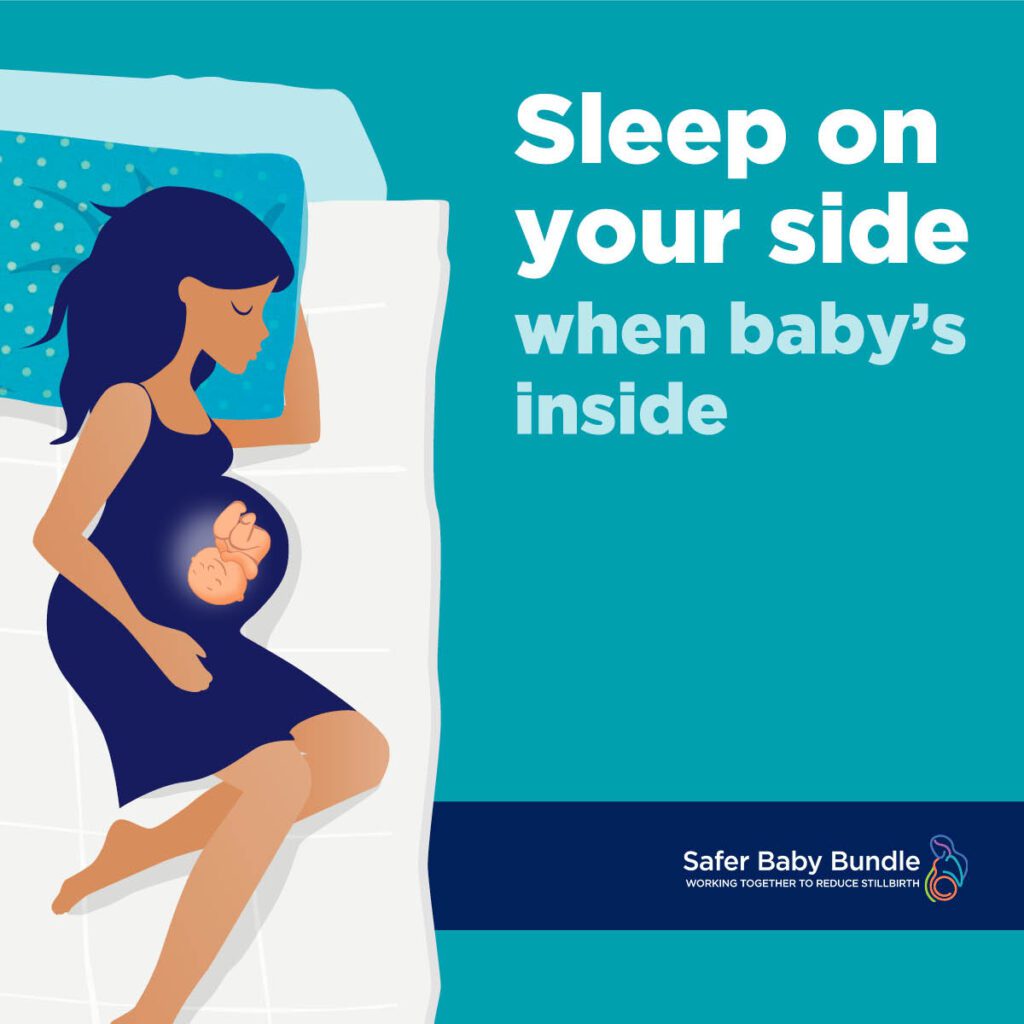
Research shows that going-to-sleep on your side from 28 weeks of pregnancy can halve your risk of stillbirth, compared to going-to-sleep on your back.
After 28 weeks of pregnancy, lying on your back presses on major blood vessels which can reduce blood flow to your uterus and the oxygen supply to your baby.
You can go to sleep on either the left or the right side - either side is fine. It's normal to change position during sleep and many pregnant women wake up on their back. That's OK! The important thing is to start every sleep lying on your side (both for daytime naps and at night). If you wake up on your back, just roll over on your side.
New research shows that going to sleep on your side from 28 weeks of pregnancy halves your risk of stillbirth compared with sleeping on your back.
After 28 weeks of pregnancy, lying on your back presses on major blood vessels which can reduce blood flow to your womb and oxygen supply to your baby.
Stillbirth after 28 weeks of pregnancy affects about one in every 500 babies. However, research has confirmed that going to sleep on your side halves your risk of stillbirth compared with sleeping on your back.
You can go to sleep on either the left or the right side – either side is fine.
Even if you prefer it, going to sleep on your back is not best for baby after 28 weeks of pregnancy.
It’s normal to change position during sleep and many pregnant women wake up on their back. That’s OK! The important thing is to start every sleep lying on your side (both for daytime naps and at night). If you wake up on your back, just roll over on your side.
Side Sleep Study: Maternal Going to Sleep Position and Late Stillbirth; Time to Act but With Care
We thank Tommy’s UK for allowing us to adapt their campaign for our purpose.